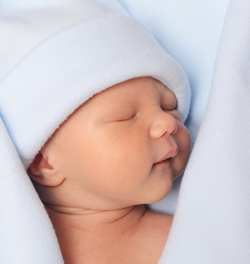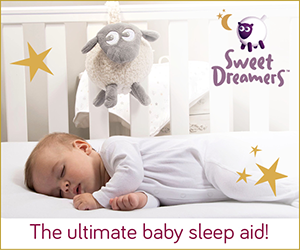Hearing: The First Two Important Years

Babies are able to hear from birth, and respond to sounds starting from a very young age. In order for speech to develop normally, a baby must be able to hear. The first two years is the time during which hearing develops in children. It is important be able to recognize signs of a hearing problem as early as possible and seek medical attention if there are any concerns. Here is a guide of signs of normal hearing development by age through the first two years of life:
By Four Months of Age a Baby Should
- Move or react when in response to any noise.
- Startle when there is a very loud noise.
By Seven Months a Baby Should
- Turn his or her head toward a voice or a noise (when a parent calls, even without being seen).
- Stir or move in response to a noise or voice.
- Startle when there is a loud sound.
By Nine Months a Baby Should
- Turn his or her head to find out where a sound is coming from.
- Turn around if a parent is calling from behind.
- Stir or move in response to any sound.
- Startle when there is a very loud noise.
At Twelve Months a Baby Should
- Turn his or her head in all directions and show interest in a particular sound.
- Repeat sounds that parents make.
- Startle in response to a loud noise.
At Two Years of Age a Child Should
- Be able to point out a part of his body when asked without seeing the person’s lips move.
- Be able to point to the right picture when asked. For example, “Where is the dog?”
- Be able to do simple tasks when asked, without seeing your lips move.
If your child does not do these things at the appropriate age as listed above, or if you have any doubts about your child’s hearing, speak to your healthcare provider.
Is There a Special Hearing Test for Babies?
Yes. During a usual hearing test or Audiogram, a sound is played into the child’s ear and the child is asked to signal that she heard the sound. Obviously, the younger a child, the more difficult this is. In a baby, the technician looks for signs such as startling—body or facial movements that indicate the sound was heard. Fortunately, there exists a more sophisticated and reliable test called the Auditory Evoked Response Test. Normally, when sound is heard, it passes from the ear as an electrical signal through the auditory (hearing) nerve to the back of the brain where hearing is decoded and understood. By placing small electrodes on the baby’s head, the travelling electrical signal can be recorded on a graph. During this test, a sound is played and the response to the sound is then recorded on the graph. If the graph picks up normal electrical activity of the auditory nerve in response to the sound, this is considered normal.
What Exactly Is a Hearing Problem?
When we talk about hearing problems, we really mean deafness—not being able to hear. And there are two types of deafness. One is neurosensory deafness, in which the hearing nerves don’t work properly. The other one is conductive hearing loss, which basically we see very commonly in children who get recurrent ear infections where the space behind the eardrum is full of fluid that blocks the transmission of sound. So conductive hearing is not the same as neurosensory deafness. Hearing loss related to recurrent ear infections is usually not permanent and treated differently.
Once a hearing loss (deafness) is confirmed, the child is evaluated by an ENT (Ear, Nose, and Throat) doctor and other specialists whose aim is to attempt to restore the hearing loss through hearing aids or, in some cases, cochlear implants (devices inserted into the child’s ear or ears). In any case, the child will also need to have special speech therapy to help her talk and develop language as normally as possible.
Early Detection Is Important
The earlier a hearing loss is detected the better. Firstly, if the hearing loss can be treated, then it should be, right away. Additionally, the earlier the hearing loss is restored, the quicker the child will start to develop and catch up in terms of speaking and language skills.
Children at High Risk
There are certain risk factors that we know are associated with hearing difficulties or deafness. These include
- Premature babies are at higher risk.
- Babies who have been given certain antibiotics (e.g. aminoglycosides such as gentamycin) which are known to be ototoxic, meaning they are toxic to the hearing (auditory) nerve itself.
- Children who have had infections of the central nervous system such as meningitis or encephalitis are also at risk for having hearing difficulties.
- A family history of hereditary deafness: we know there are certain families with what we call congenital neurosensory deafness, in which children are at higher risk of becoming deaf.
Ontario-based pediatrician Dr. PAUL Roumeliotis, Adjunct Professor of Pediatrics, McGill University and Associate Faculty Member at the Johns Hopkins School of Public Health, is a writer, publisher, and producer of multi-format health and wellness resources. Dr. Paul’s first published book, Baby Come Home – A Parent’s Guide to a Healthy and Well First 18 Months, focuses on early child development support and its effects. For more information: www.drpaul.com. Copyright Autograph Communications Inc.




